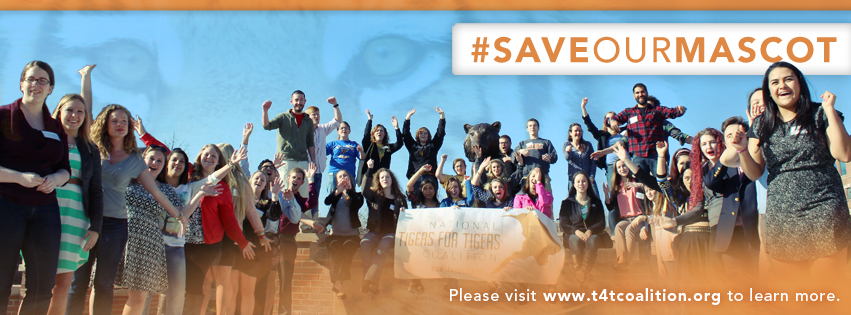“Tigers live in Africa, right?” Yes and no shouts fill the
room. “Do they…,” I ask again. Confused
children begin to debate. Do tigers live in Africa?"
This is just one of the many questions we ask children during a Cubs for Cubs presentation. Cubs for Cubs is a program developed by the Tigers for Tigers club here at Clemson. The goal is to inform grade-school aged children about the plight of tigers and tigers in America. Many of these children have no idea about the tiger’s current endangered state, and the teachers seem surprised to hear such a low number of wild tigers existing too. Our goal is to change that, we want everyone to know that our wild tigers are dying, and we want them to help stop it.
 |
| Diane Dotson and Madeleine McMillan (left) of Clemson T4T speak to elementary school students about tigers. |
Many of the kids even have cub encounter stories, and are
even more surprised to find out how these captive animals treated. IFAW
provides our Cubs for Cubs program with stuffed animal tigers that we present
to the class as their very own tiger. We do this to emphasize the fact that
tigers are to be admired of course, but to discourage the support of
cub-petting industries and owning tigers as pets. We stress the fact that it is
best to leave tigers in the wild, but if they are already captive, in
accredited zoos that have the proper funding and equipment to take care of
these majestic giants.
A typical Cubs for Cubs visit to an elementary school or
after school program consists of a fun and informative PowerPoint presentation,
an educational video from IFAW, International Fund for Animal Welfare, and then
a short, answer-out-loud quiz that reviews all the information that has been
presented. We are always impressed with the amount of information these children
retain as they answer the questions correctly.
My favorite part of the presentation is when we ask the
children what we can do to save the tigers. It gives us hope for the tiger’s
future to hear how passionate these children are by just listening to their
solutions for saving the wild tiger. We get the usual, “protect them,” answer
that is absolutely correct, but a lot easier said than done. One child’s
question to a Tigers for Tigers member Trey Riedmayer, was our best response
yet. “Why can’t we just kill them?” Startled, Trey asked the child to repeat
his question. “Why can’t we just kill the poachers,” the child asked with his
intentions in the right place. “It’s just not that easy,” answered Trey. We
then tell the children how we can stop supporting the poacher’s deeds and how
we should tell others to not buy tiger parts, which will hopefully put them out
the business. The children give such inspiring answers on how to save the
tiger, that we are instantly rewarded for all our hard work. The children get
it, now why can’t everyone else?
Cubs for Cubs would like to give thanks to IFAW for
providing us with the educational video that the children we visit always
enjoy. Also for the stuffed animals tigers that help reiterate the point of not
supporting cub industries or tigers as pets. Another thank you to Northside
Elementary School for being so inviting to our club by letting us visit twice already and already
planning another visit. Lastly, I would like to personally thank all members,
present and past, of Clemson University Tigers for Tigers for supporting Cubs
for Cubs as we work to become a well established and respected program that
raises awareness of Tigers in the wild and in America. Thanks to everyone who
has taken part in Cubs for Cubs presentations.
Diane Dotson
Clemson Tigers for Tigers
